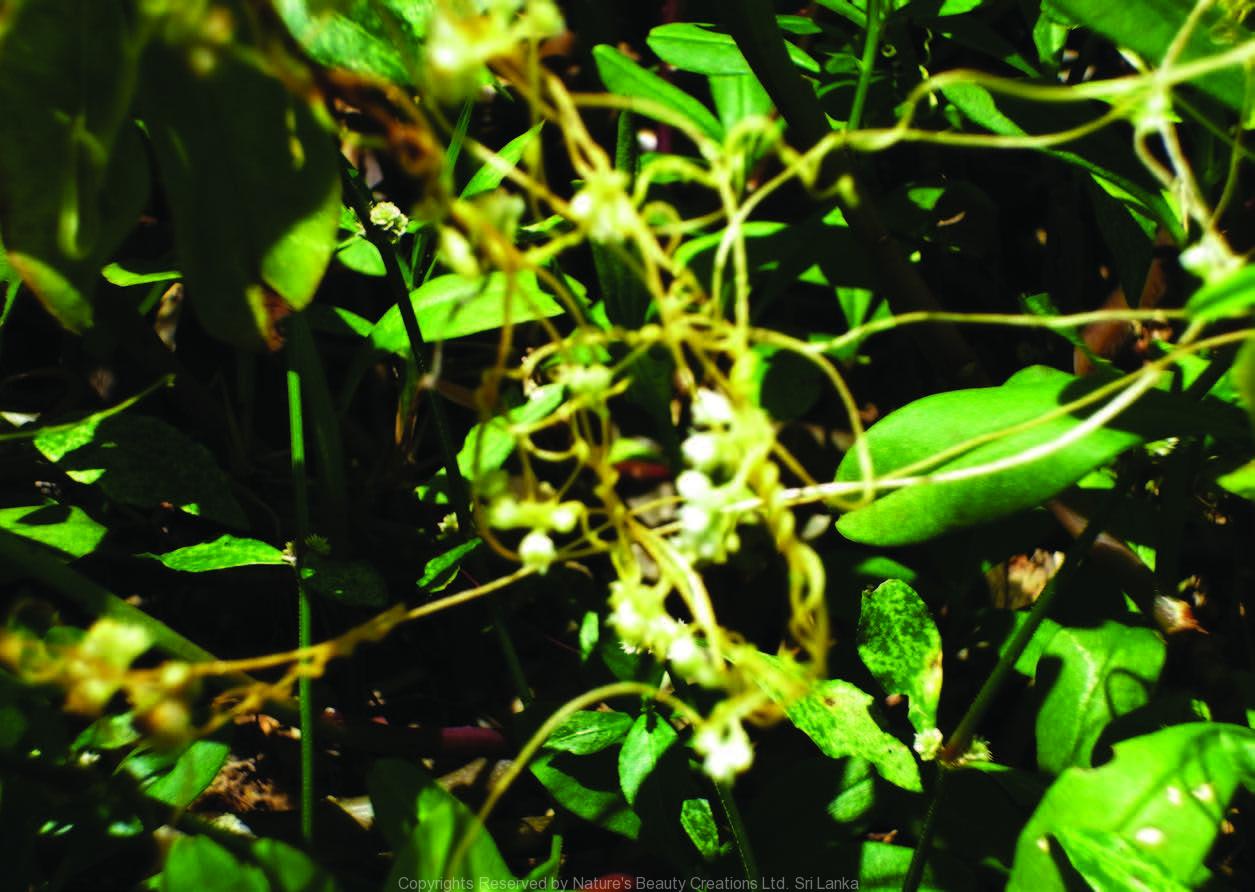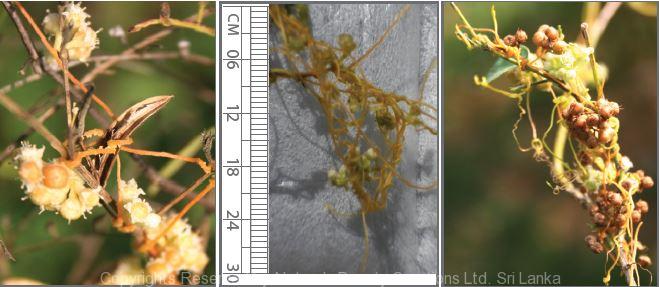

Traditional Knowledge
Useful plant parts :
Whole plant and stem
Uses in traditional medicine :
- Whole plant is applied as a styptic to wounds and is used to nourish the liver and kidney matrices
- Decoction of the pounded stems with leaves of other plants is used to treat prolonged blood loss
Scientific Research
Chemical constituents:
Threonine dehydratase enzyme from seeds
Bioactivity :
Methanol extract of plant grown on Nerium indicum : analgaesic
Clinical:
Note :
Parasitic plant
References : Ghule, R. S., (2011), Analgesic activity of Cuscuta campestris Yuncker a parasitic plant grown on Nerium indicum Mill, Journal of advanced pharmacy education and research, 1, 45-51. Madan, V. K. And Nath, M., (1983), Threonine (Serine) Dehydratase from Cuscuta campestris, Yunck Biochemie und Physiologie der Pflanzen, 178(1), 43-51.
Copyrights Reserved By
Natures Beauty Creations




